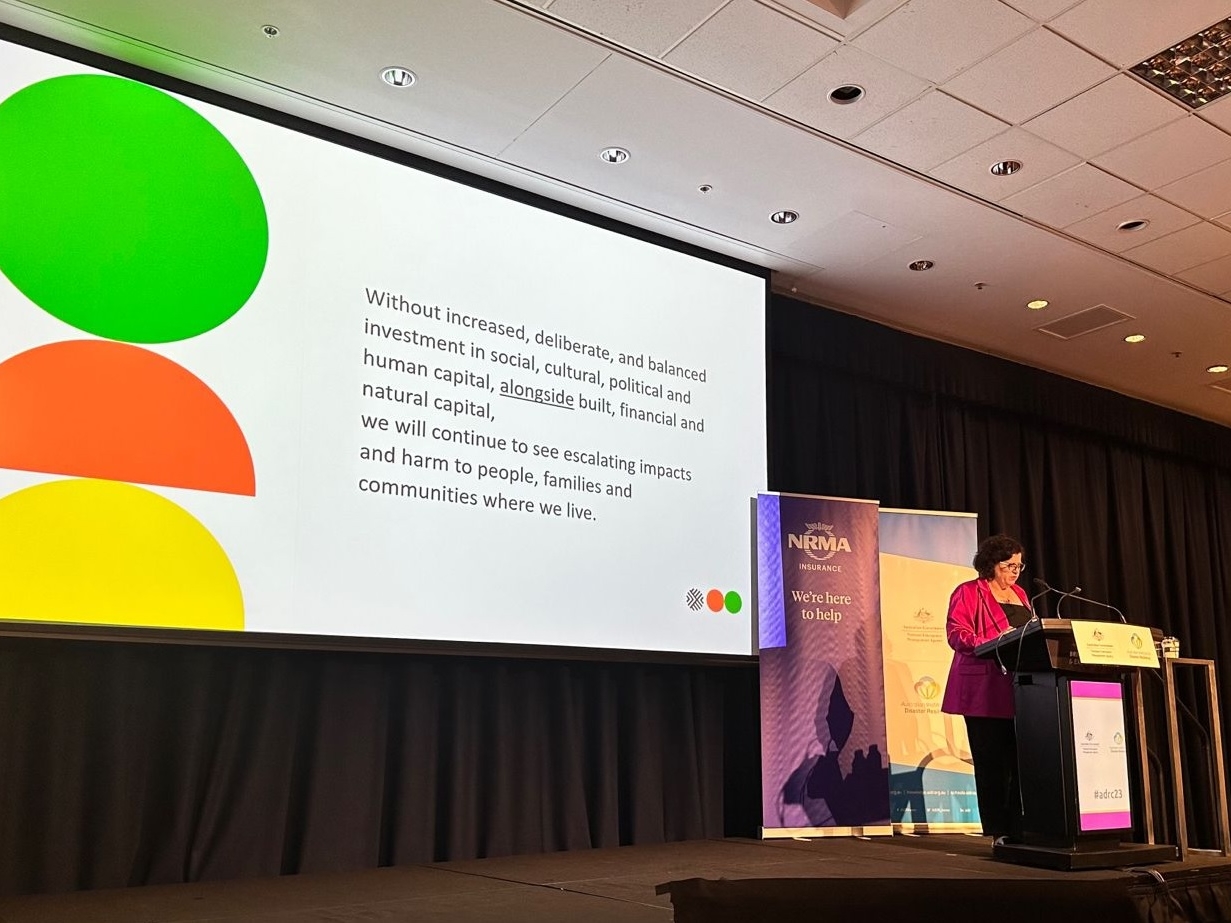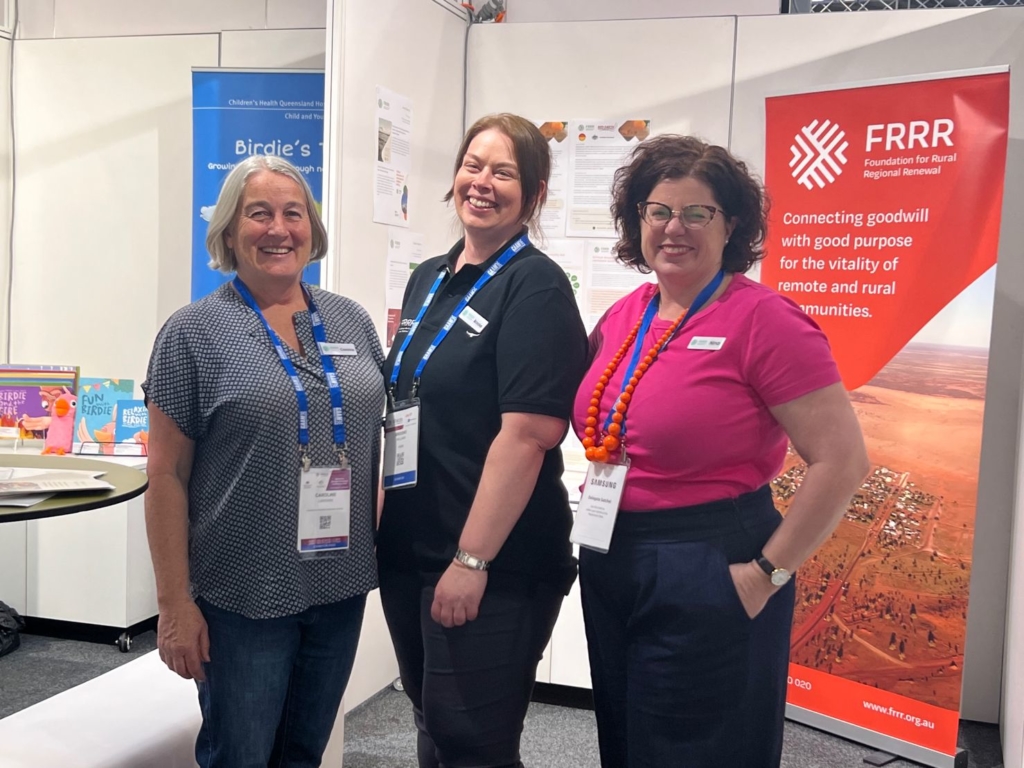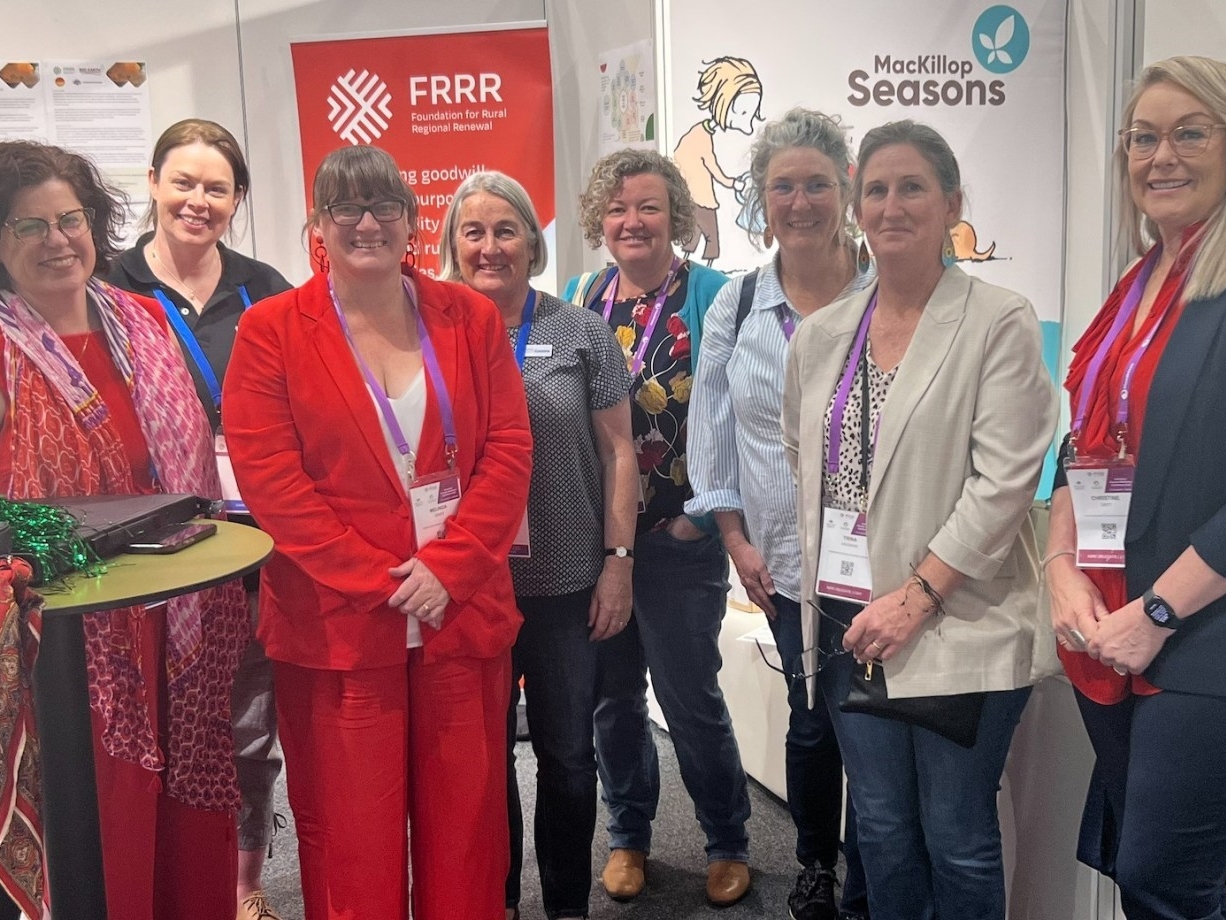Insights Thought leadership: 29 August 2023
By Nina O’Brien, Disaster Resilience and Recovery Lead
The call to action at this year’s Australian Disaster Resilience Conference is deeply apparent and has been reflected in most of the presentations, including my own – we must expand our understanding, balance investment, and elevate the voice of community, particularly First Nations people, to reduce the risks and impacts of a changing climate, and build collective resilience towards the increasing severity and frequency of disasters.

At FRRR, we are addressing this call to action by working deeply with local groups that are on the ground, working to enhance the preparedness and resilience of their remote, rural and regional communities. Programs like Disaster Resilient: Future Ready, as well as the thousands of grassroots, community-based projects we support through small grants like SRC Prepare and Recover , and others such as Rebuilding Futures, allow us to learn from local leaders about the needs and priorities of their communities, and how we can best support them to build local resilience and disaster recovery.
My presentation spoke of the importance of balanced investment in people and processes, not just products and ‘things’ across the entire disaster cycle, with a specific focus on preparedness. Social, cultural, political, and human capital are equally as vital as built, financial and natural capital in bolstering resilience. This approach takes a holistic view that acknowledges the interconnectedness of all these facets of community life.
This is why I advocate that we must shift our focus from (often) the disproportionate investing in products and things (hard infrastructure, as we often refer to it) to prioritising people and processes (or the soft infrastructure).
Ultimately, it is the people and processes that really make communities tick and make a difference in effective disaster response, recovery, and preparedness.
This is reinforced by the findings of ongoing research that FRRR has commissioned alongside our learning partner, University of Sydney.
“Working in a community led way to build local resilience means that local community members act as equal decision makers with a range of other stakeholders (local government, emergency services, service providers, business) to address issues which are priorities for that community. Rather than a top-down approach, where decisions are made outside a community or are made by government or other formal authorities, community led resilience building starts and continues with listening and collaborating on the priorities of community members. Genuine ownership by the local community requires their active involvement in all aspects of resilience building, not merely consultation.”
Howard, A., Rawsthorne, M. and Joseph, P. (2022) Critical Dimensions in Community Disaster Resilience [FactSheet], University of Sydney for the Foundation for Rural & Regional Renewal
The formal study has reinforced our anecdotal observations that when communities take the lead in driving resilience-building efforts, remarkable things happen. Whether tackling natural disasters like cyclones, bushfires, floods, or adapting to community shocks such as the loss of major services or industries, community-led initiatives tend to persist longer and have ongoing positive impacts. They foster local strengths that can adapt to a wide range of challenges over time.
This work provides an important formal evidence base for supporting grassroots not-for-profit organisations that are critical to nurturing the vitality of regional communities.
It also validates FRRR’s preferred approach of working alongside communities, mapping their assets and systems of interconnectivity, understanding their particular strengths and nuances, and viewing community life through resilience dimensions that help to identify and craft locally driven resilience initiatives.
Through diverse funding mechanisms that prioritise people and processes, we’ve seen tangible dividends in increased resilience. These include support for locally conceived projects and initiatives; building volunteer capacity and strengthening networks; resilience coaching, mentoring and support; strengthening internal organisational capacity; and fostering long-term project delivery capability through sustainable local partnerships.


And as a side note from ADRC23; the feedback from communities is clear. They want flexible funding criteria, longer timelines, negotiated measures of success, simpler forms and reporting – and patience from funders. As a mechanism to deliver support to approximately 1000 small projects per year; with around half of those related to disaster impacts; FRRR is working hard to meet these requests with flexible guidelines, negotiated timelines where possible, agile timing, and a streamlined approach to applying and reporting.
Without deliberate, balanced investment in social, cultural, political and human capital, alongside traditional capital, the impacts and harm from disasters will continue to escalate in our communities. We need a systems-based lens that prioritises people and processes to meet future community needs and challenges effectively.
The long-term benefits of this shift are significant; capable local individuals, agile community-based networks, strong not-for-profit organisations and ultimately resilient remote, rural and regional communities become the norm. This paves the way for a future where communities can thrive, adapt and face the uncertainties of a changing climate, with resilience and hope.

